3 startups every EV hipster should know, before they make it big
The EV space is growing so fast that it’s simply impossible to keep track of all the companies making their way within the industry.
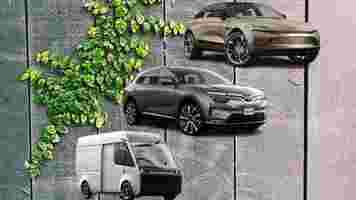
And while a number of them might never make the headlines, there’s a bunch of “underdogs” we should definitely keep an eye on.
Mullen has been a minor player in the US-based motor industry since 2014, but within the past couple of years it has been surely making big strides towards electric vehicles.
In November, the company announced the development of its own EV plant in Tunica, Missisippi, where it will manufacture its three electric models.
We have two two pretty impressive electric cargo vans to look forward to, the Mullen ONEs , but most notable is the Mullen FIVE SUV, which debuted at the LA Auto Show last month.
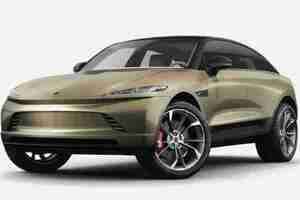

With a range of 523km miles and a max speed of 250km/h, the Mullen FIVE could be one of the fastest EVs on the market — and it’ll boast a rapid acceleration time of 0-60 in a mere 1.9 seconds. Impressive, right?
The FIVE will cost between $55,000 and $75,000 before incentives and deliveries are expected in 2024.
VinFast , the Vietnamese automaker under Vingroup, is the second company that’s definitely stirred the waters lately.
Just this year, the company not only launched an all-electric bus and a number of escooters in Vietnam, but also unveiled two all-electric SUVs at the LA Auto Show.
The VinFast VFe35 and VFe36, which the company says will be global vehicles, are currently prototypes, but promise around 480km of range and will come with a series of advanced features such as virtual assistant and in-car office.
Interestingly, the vehicles’ design also bears the signature of Pininfarina — you know, the Italian company that’s been designing classic Ferraris.
And that’s not all. VinFast has already set clear plans on its global expansion, especially eyeing… the US.
It will invest more than $200 million to open a U.S. headquarters based in Los Angeles, while a factory is on the way for 2024.
In fact, the company is betting so seriously on EVs that on Sunday it announced the development of a $174 million battery cell plan in Vietnam, to ensure it has its own battery supply chain.
Arrival isn’t focusing on passenger vehicles at all. Instead, it’s building a fleet of electric vans, and EVs designed for ride-hailing and car-sharing.
It’s also following a completely different approach when it comes to vehicle production: the company’s not interested in building huge plants, but has opted for the development of “ microfactories” to build products close to where they’ll be sold.
Arrival was founded in London six years ago and, in 2020, managed to establish its North American headquarters in Charlotte, North Carolina, where it’s also investing $11.5 million to build a high-voltage battery module assembly plant.
Plus, in September, the company also stroke a deal with Li-Cycle , a lithium-ion battery recycler based in Canada, to further enhance its battery supply chain.
So far, Arrival has a microfactory in Bicester, UK, and plans to open two more in the US, in North and South Carolina — it actually hopes to build 34 microfactories by 2024.
The vehicles’ production is expected to begin in mid-2022.
It’s ridiculously hard to find EV chargers — hopefully this hackathon will fix it
Ok, there’s a lot of bullshit hackathons that mine people for their IP. There’s also situations where people swap a weekend of sleep deprivation and unpaid labor for little more than swag and some pizza. Then, there’s the issue of hackathons being prohibitive to folks with kids or carer responsibilities…

So when I find one I can get behind, I make an effort to find out more. Give me a hackathon that works on real-world problems and offers great benefits to participants. Even better, if it’s participants are actually industry professionals.
Ordnance Survey (OS) is the national mapping agency for Great Britain. They recently hosted a two-day OS Map and Hack event in Southampton, UK, to work on ways to enhance EV infrastructure.
Over 80 participants joined forces to work on challenges such as developing charge points, attracting more non-EV owners, and increasing access to EV infrastructure in remote communities.
Hackathon participants had access to OS data and APIs, UK-wide datasets from EV routing planning and charger app WattsUp , and OS’s team of Geographic Information System (GIS) specialists to help with the challenge.
An EV charging site planner app wins the hackathon
The winning idea was an EV charging site planner app created by Arcadis , which identifies suitable locations for installing EV charging points .
The app assesses potential charging point sites, then refines and characterizes any search by pinpointing red, amber, and green dots on a map to show the best locations. It pulls in data from sources such as the OS Maps API and council land registry information.
From this, the app used proximity to existing charge point infrastructure, driving times, land ownership, and priority land without any charging points, and grid supply from substations to determine optimal locations.
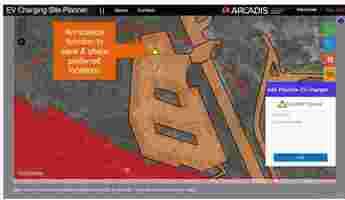

The city of Leeds was tested during the hackathon, with the app revealing 144 of the best potential charge point sites found on city council land, and a further 650 possible locations.
Other finalists I like
Circuit Finder app from the Department for Transport calculates how long a journey will take for EV owners with different needs. Users put in their start point and destination for journeys, and the app finds the best route for them according to preference like where they prefer to wait.
Plonkers designed by Ofgem aims to help rural communities transition towards EV mobility. The prototype app focused on Thurso in Scotland and using OS Maps API and OS Places API to provide household addresses, and Open Street Map data for tourists, hotels, and caravan parks.
It investigated households that share the same charging points and distances from the nearest charger. (How can you not love the term Plonkers?!)
Rate My Charger was a concept creat ed by RAC Agilysis to promote the best chargers in the country. The app scored the quality of EV charging points based on a number of factors including:
How safe people felt using them
The quality of a mobile phone signal
Whether there were any public conveniences nearby
How scenic the location was
It pulled in data from OS Open Map Local and added open data sources such as Toilet Map, CodePoint, and crime rate open data.
Why I like hackathons
Besides the problems I detailed earlier, hackathons have a long history of bringing people together to develop solutions to specific problems and challenges. From a tech perspective, it’s a great way to dig deep into a specific problem with folks in the same or adjacent industries. You gain exposure to a diverse pool of potential solutions and can get your ideas validated.
Further, employers are always recruiting at hackathons, so it’s a great chance to meet your future employers and colleagues.
Hackathons are for everyone
Even more critical, hackathons are not just for developers. You need writers to translate tech concepts into plain English. Designers who can create charts and graphics, and amazing GIFs are vital.
Equally important are financial folks who can set a potential budget of costings. This is vital in case you win the funds to finance your idea.
Incidentially, one of my favorite hackathons was a policy hackathon at Latvia’s 5G Techritory conference. Yep, a policy hackathon. It focused on supporting 5G deployment in the Baltic Sea Region. Thus, an international conference was the perfect place to bring together folks from different industries and regions.
The winning team looked at cross-border travel of autonomous vehicles and gaps in European policy and legislation. They created an extensive list of things that policymakers need to solve before autonomous vehicles can cross borders. These included:
Cross-border travel
Cyber incidents
Mandatory reactions to an incorrect read of a traffic sign
Connectivity issues
Liability issues
They also created a roadmap of how policymakers should enable the cross-border travel of autonomous vehicles. Very cool. I’d be curious to hear about your experiences with hackathons: maybe you won, found a new job, or formed a great partnership?
IAA 2021 recap: Going big on micromobility and greenwashing
Did you know SHIFT is taking the stage this fall ? Together with an amazing line-up of experts, we will explore the future of mobility during TNW Conference 2021. Secure your ticket now!
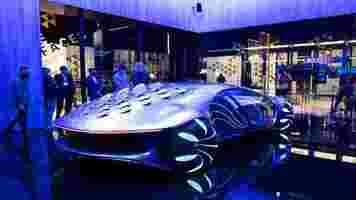
It’s September, and in-person events are slowly returning to Europe. This week saw the return of the IAA fair. It moved from Frankfurt to Munich, and its new rebrand is the IAA Mobility . It’s an opportunity for carmakers to show off their latest designs and concept vehicles, but it’s also an event struggling to show its relevance.
Is IAA show still relevant?
Do people still visit car shows to look for their next purchase or aspirational car? COVID made car makers pivot sharply to online sales. Online vendors such as Tesla and Carvana , have shown there’s another way. Many brands are focusing on lifestyle integration.
An example is Intersect by Lexus , where you can visit their coworking spaces, restaurants, cafes, and creative precincts without ever seeing a car. Most people don’t need a car show to convince them to buy — they’re online doing their own research.
It’s possible that, as with events like MWC and IFA here in Europe, plenty of business goes on behind the scenes at IAA. Stallholders hold meetings with each other to talk trade and partnerships.
If nothing else, many people are suffering from Zoom fatigue. An opportunity, therefore, to fist bump and hand sanitize with a few thousand people while drinking cheap beer is a legitimate enough reason for such as event.
However, the Stellantis group (Peugeot-Fiat-Chrysler), Toyota, and Tesla are notably absent. Instead, the show has a hall of vintage vehicles and toy cars, suggesting a struggle to fill conference floor gaps.
There’s a bounty of alternative vehicles at IAA
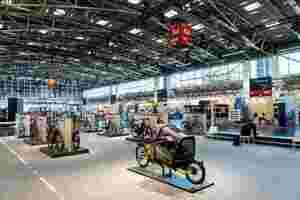

I think the biggest winners of the shows are the alternative modes of transport like ebikes, cargo bikes, and emopeds. There are over 70 bikes on show across two halls and an open-air bike circuit where visitors can try out new models on several test tracks. This is a hugely appealing way to make sales.
It’s a necessary pivot. Car OEMs are struggling to win hearts and minds for all their concept cars and latest design features. After all, people are turning towards greener modes of transport.
I predict we’ll see a very different show in about a decade. It’ll be one where carmakers woo fleet operators, not private owners. The core audience will come there to try out alternate modes of transport.
IAA combines sustainability goals with a splash of greenwashing
If you drank a shot every time you heard the words electric vehicle or carbon emissions, you’d be drunk in a minute or two. What we see at IAA is car markers pushing to get ahead to regulators in showcasing the latest electric vehicle and, yes, hydrogen fuel cell vehicles .
It’s no coincidence that Hyundai held their own Hydrogen Wave Forum online yesterday (more on that soon).
Unsurprisingly, the event included a visit by the leader known locally as the “car chancellor” Angela Merkel. She earned the moniker for her efforts to protect German carmakers from tougher EU pollution regulations.
German elections are at the end of the month and IAA Mobility is the place to be seen. Many parties support greener modes of transport. As a result, the last few months have seen greener streets. Berlin is full of pop-up bike lanes, parking places replaced by seating, and intentionally car-free streets .
Greenpeace Germany announced this week that it is suing Volkswagen for an inability to meet the decarbonize rates agreed to in Paris. Protests against car culture have been a common lead-up to the show.
Ahh…. Volkswagen. They can’t help themselves. Before Merkel’s visit, VWchief executive Herbert Diess had plenty to say. He claimed Merkel could have been “ a bit more decisive ” in some areas, such as incentives for electric vehicles. It’s a funny statement considering that VW’s dodgy practices (aka dieselgate) expedited the push towards electrification.
An industry still reeling from dieselgate
German automakers have a sordid history with greenwashing. In 2015, the US Environmental Protection Agency (EPA) found that Volkswagen fitted software to over 11 million diesel vehicles. This allowed them to meet exhaust pollution standards when monitored in tests.
But in real life, their emissions exceeded the limits. Some released up to 40 times more nitrogen oxide than legal limits.
For the next five years, the EPA found the software in even more VW cars. Unsurprisingly, the deceit led to over 30 billion euros in fines, the sacking of the VW CEO, and jail sentences for two staff. Police filed charges of market manipulation against other staff members following the scandal.
VW offered the affected car ownership compensation, but many pursued civil action to get the total cost of the vehicle they purchased. It left the public deeply distrustful of the carmaker’s claims.
A time of reckoning for the auto industry
The last year has not been easy for carmakers with COVID-19 shutdowns and the semiconductor chip shortage .
According to the European Commission , the automotive sector provides direct and indirect jobs to 13.8 million Europeans, representing 6.1% of total EU employment. Some 2.6 million people work in the direct manufacturing of motor vehicles, representing 8.5% of EU employment in manufacturing.
According to the Center for Automotive Research , the auto industry spends $16 to $18 billion on research and product development annually. The car industry funds 99% of this. It’s also a major consumer of products from many other manufacturing sectors. Without the auto sector, it isn’t easy to imagine manufacturing surviving.
So, any loss in car manufacturing means a loss in jobs. This will, of course, be less of an issue as the bulk of factory floor roles are phased out by staff retirements, and mechanics hold iPads instead of wrenches. But for now, the automotive sector is hugely influential in Germany.
Carmakers are focusing their energy on two major transitions as they move from diesel to EV and driven to autonomous vehicles.
The IAA offers a space to showcase their collective efforts, even if most people spend their time testing bikes and riding in cargo wagons.
Do EVs excite your electrons? Do ebikes get your wheels spinning? Do self-driving cars get you all charged up?
Then you need the weekly SHIFT newsletter in your life. Click here to sign up.